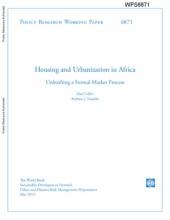Land Library Search
Through our robust search engine, you can search for any item of the over 73,000 highly curated resources in the Land Library.
If you would like to find an overview of what is possible, feel free to peruse the Search Guide.
/ library resources
Showing items 1 through 9 of 36.The Country Partnership Framework (CPF)
will succeed the Myanmar interim strategy note (FY13-14) and
be the first full country strategy for Myanmar since 1984.
This CPF comes at a time of great opportunity for Myanmar;
Brazil has the fifth-largest national land area in the world and this land resource represents a critical asset for the country’s urban, agricultural, and economic development, also providing essential environmental services.
If states would interact more synergistically with communities, they could tap local energies and resources for development-- and help create a development-oriented society and polity in the process.
This report analyzes the experience
of Cambodia with the Poverty Reduction Strategy Paper (PRSP)
process3. The focus of the report is on evaluating the
performance of the World Bank in supporting the PRSP
The International Monetary Fund (IMF)
and the World Bank introduced the Poverty Reduction Strategy
Paper (PRSP) process in 1999 to strengthen the poverty
alleviation focus of their assistance to low-income
States can do much to tap
community-level energies, and resources for development, if
they seek to interact more synergistically with local
communities. The broader spin-off is creating a
The accumulation of decent housing matters both because of the difference it makes to living standards and because of its centrality to economic development. The consequences for living standards are far-reaching.
Tanzania is largely an agriculture-based
economy. This sector accounts for over three-quarters of
national employment, and approximately 25 percent of gross
domestic product (GDP). The national agricultural input
The accumulation of decent housing
matters both because of the difference it makes to living
standards and because of its centrality to economic
development. The consequences for living standards are



